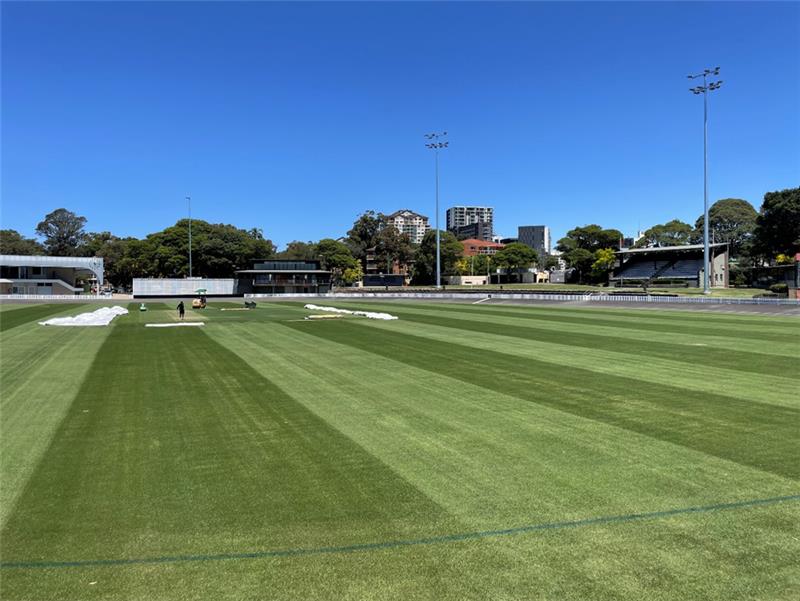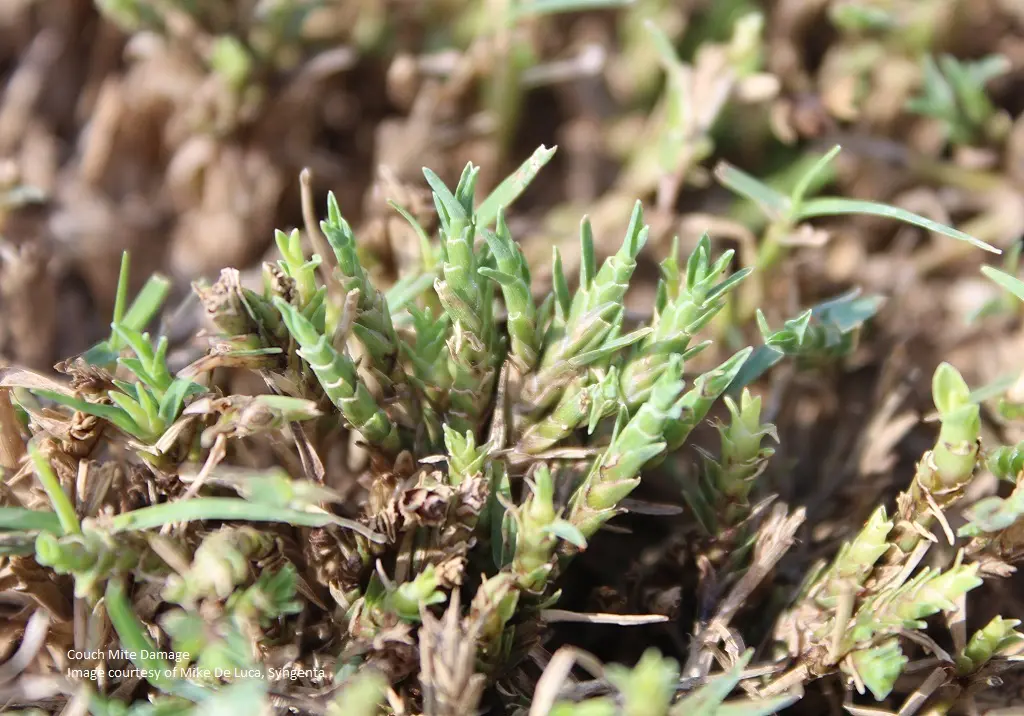Navigating the Season: A Strategic Guide to Sportsfield Transitioning
As the seasons shift, so too must our approach to sportsfield management. Transitioning turf from cool-season to warm-season species is a delicate balance of timing, product selection, and cultural practices.
This month, we spotlight the key phases of sportsfield transitioning to help turf managers optimise performance and resilience across the calendar year.
Field Conditions: Laying the Groundwork
Understanding your field’s wear level and desired turf species is essential. For fields with medium to high wear, species selection becomes critical – particularly when considering Kikuyu or Queensland Blue Couch, which require careful herbicide planning. These species thrive under pressure but demand precision in pre-emergent strategies.

Hurstville Oval
1. Herbicide Management
Careful herbicide selection is essential and should be based on your target weeds -whether broadleaf, poa annua, or ryegrass in oversown fields. Equally important is choosing products compatible with your turf species to ensure effective control without compromising turf health.
Oversown fields benefit from early spring interventions. Scarifying and lowering the cutting height allows light and air to reach the warm-season turgrass understorey, accelerating transition.
Our newest product, Thatchzyme, can be tank mixed to accelerate organic matter breakdown and improve turf health. It complements scarifying by biologically digesting thatch, enhancing air and water movement through the profile.
a) First Pre-Emergent Application
For sportsfields experiencing moderate to heavy wear, Pennmag and Oxadiazon-based products (such as Ronstar or Oxstar) are preferred due to their root-safe profiles. These pre-emergents provide effective weed control without compromising the root development of desirable turf species like couch or kikuyu. Unlike stronger inhibitors, these products allow stolons and roots to establish, making them ideal for fields under stress or active play. Their formulation is better suited to high traffic areas where turf recovery and resilience are essential.
On the other hand, Prodiamine and Indaziflam are highly effective for preventing pegging from new stolons. These herbicides work by inhibiting root development in germinating weed seeds, creating a clean surface for warm-season turf to dominate. Because of their aggressive root inhibition, these products are better suited to areas with less wear or where turf is not under stress.

b) Second Pre-Emergent Application
A follow-up pre-emergent herbicide application is essential to maintain season-long control of germinating weeds. This second round should be timed just before the residual window of the first application expires typically 6-8 weeks for Pennmag, while Prodiamine and Indaziflam may offer longer residuals. Always consult your Living Turf Tech Rep for tailored timing based on your field’s conditions and product history.
Incorporating a quality wetting agent with pre-emergent herbicides like Prodiamine and Indaziflam ensures even soil distribution, enhancing root zone coverage and weed suppression. This not only maximises efficacy but also improves moisture retention.
Thatchzyme can be tank-mixed with pre-emergents to further reduce organic build-up and improve herbicide incorporation. This synergy supports cleaner turf surfaces and better root development.

2. Miticide Control
Early spring treatments are essential even if ryegrass is retained–to suppress populations before they peak and protect emerging stolons. Applying miticides with a spreader/sticker like Wetout ensures thorough leaf coverage, improved penetration, and longer lasting control. This approach enhances product performance and reduces the risk of reinfestation during the critical transition period.

3. Insecticide Control
Non-scheduled insecticides such as Tetrino and Acelepryn offer broad-spectrum protection against key turf pests including grubs, caterpillars, and beetles without the regulatory constraints of scheduled chemicals. This makes them ideal for use in public spaces, schools, and sportsfields where safety and compliance are paramount.
Pairing insecticides with a quality wetting agent ensures even product placement into the soil profile. This improves the distribution of active ingredients, enhances root zone protection, and reduces the risk of dry patch or uneven application. Wetting agents also help maintain consistent moisture levels, which is critical for turf health during seasonal transitions.
Sportsfield transition hinges on strategic timing, tailored product selection, and a holistic approach to turf health. By choosing the right pre-emergent herbicides for your wear level, incorporating wetting agents to maximise efficacy, turf managers can assist a seasonal shift.
